Article: Yesterday's Greatest versus Today's Lowest (Intel® Pentium® 4 3.4GHz Extreme Edition and Intel® Core™ 2 Duo E6300)
(N=Newbie, E=Hardware Enthusiast, O=Overclocker, B=Budget)
III. Benchmarking
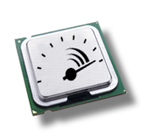
Stock Settings
For benchmarking, the stock settings will serve as the baseline scores. Note that all
settings here are on automatic, with the RAM frequency running in sync with CPU system bus.
With the advent of this new processor, the minimum speed of RAM to be used must be a DDR2-533MHz.
For the stock settings, all benchmark results will be acquired from three(3) runs, removing the highest and lowest score, but not averaging the total score of the three. This limit the number of random peaks of scores, and hopes to reduce the number of random unusual results. There will be no online submission of score because of time constraint and software limitation.
::Multimedia Rendering::Cinebench 9.5
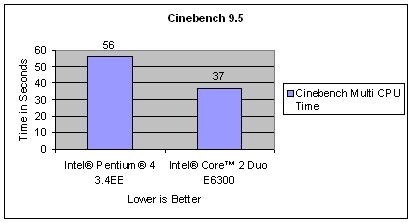 ::Subsystem Test::
::Subsystem Test::
SuperPi 1M
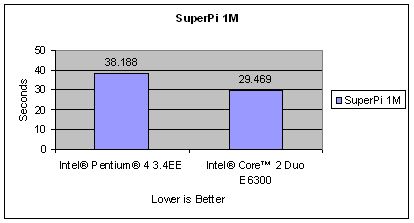
PCMark02
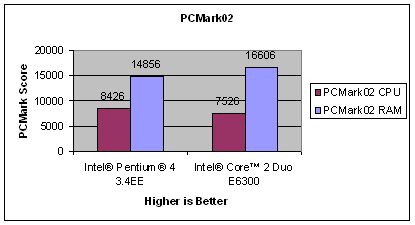
PCMark05
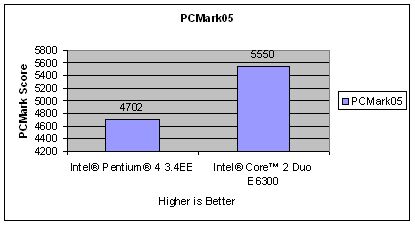
Sandra-CPU
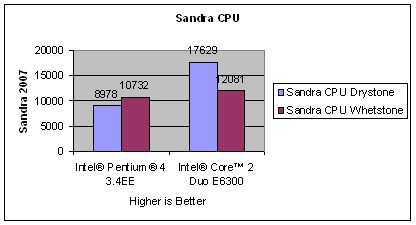
Sandra-Multimedia
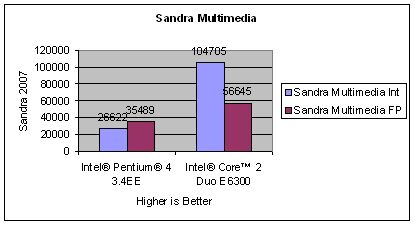
Sandra-RAM Bandwidth
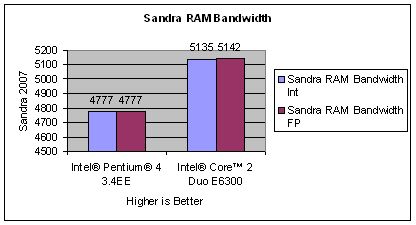
::3D Test::
3DMark01
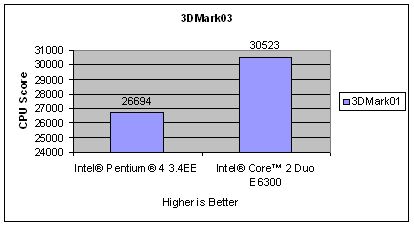
3DMark05
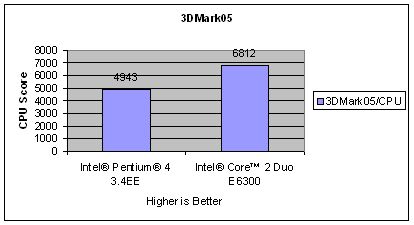
3DMark06
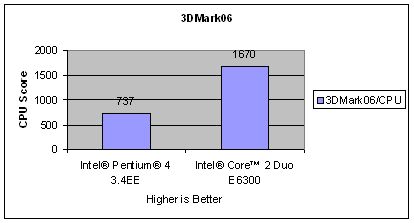
It is clear, from these benchmarks, that the lowly Conroe 1.83GHz can pummel the once greatest processor from Chipzilla. While power consumption is not an issue with the Gallatin core, with TDP of 89w, it is simply no match, both in performance, power consumption, and therefore, performance/watts. The only time that the Gallatin core wins, but not by much, is on PCMark02 which clearly shows that the benchmark isn't good for showing real-world application usage today, well of course, this is an old benchmark used only for fun.
This exercise also shows the huge performance for money that us, end users, are getting from this offerings from Intel. I can not stress hard enough how the new processors, at its current pricing, are really a treat for value, mainstream, and high end enthusiats.
For example, in multimedia processing, the sheer performance of Conroe have shown no mercy against the Gallatin. Despite the Gallatin having the same amount of cache (in L3), it just can't compete with the dual headed monster that has achieve outstanding SIMD improvement.
The other 3DMark benchmark are all singing the same song: the old processor is a bottleneck in today's gaming. I know that this is quite obvious already and a no brainer, but again, this exercise shows how software can quickly leave the once greatest hardware behind.